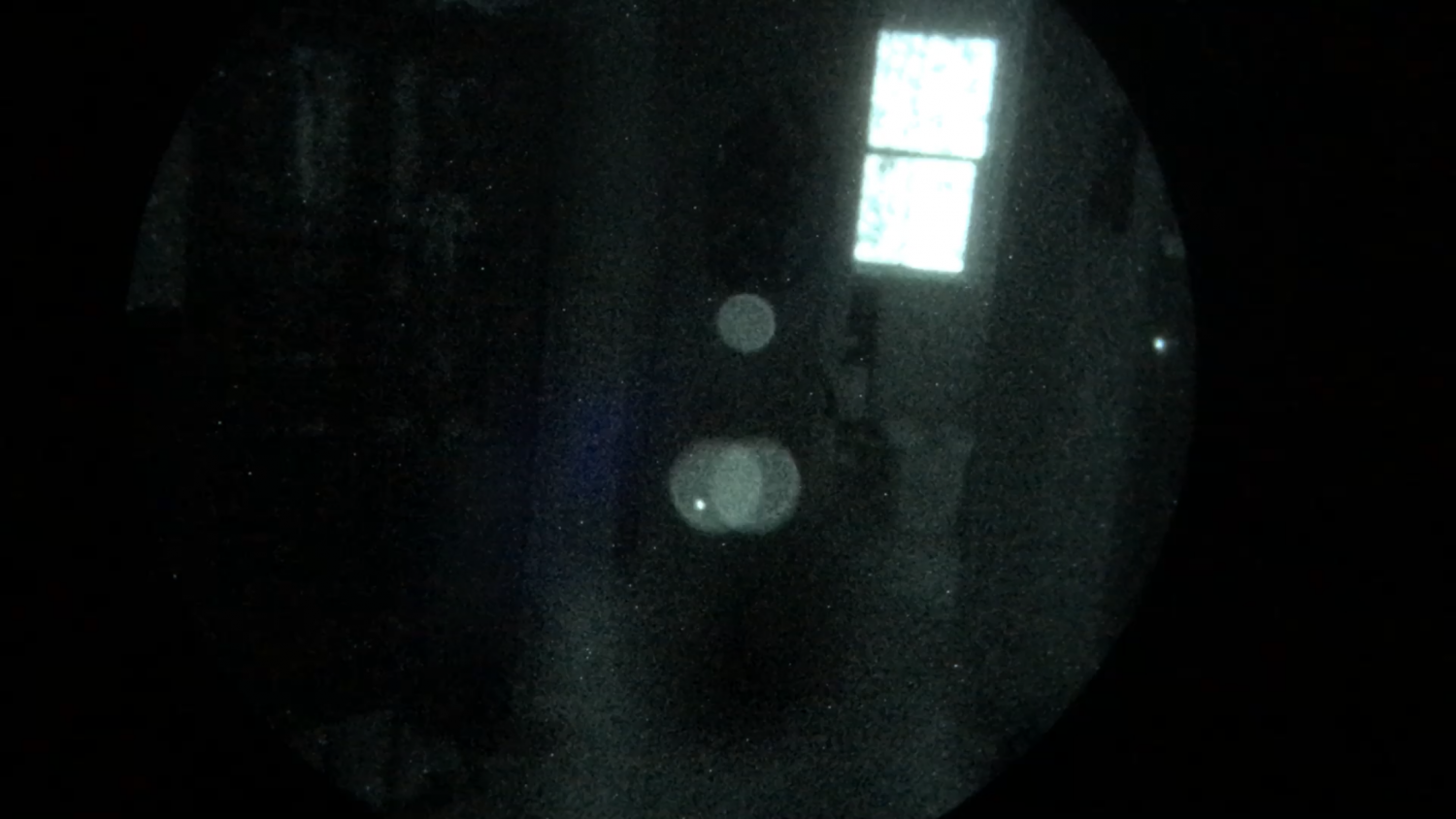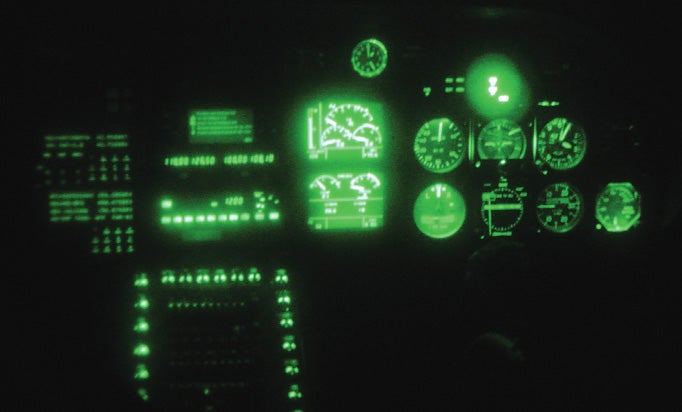For those of you who shoot with night vision, it is important to know that there is a potential incompatibility if you are using ANVIS lenses. I have a pair of ANVIS9 that I built and have found some interesting issues using these lenses. I cannot see tritium sights or green lasers.
The problem with shooting handguns with night vision is the shallow depth of field. You typically want your objective lenses focused at infinity so you can see the target. However, anything within 2 feet of you will be out of focus. Good luck trying to get hard front sight focus on your handgun iron sights. Tritium can help and it was a technique Don Edwards shared at his Night Fighters Course. When you present your tritium sighted handgun, you superelevate the front sight and then settle it in between the two rear glowing orbs. You can see this below.

The three glowing orbs are the tritium sights on my handgun.

Tritium as seen through my L3 White Phosphor PVS-14
In the photo above you can see how bright the tritium sights look with my PVS-14. It has an L3 White Phosphor tube so it does not look green.
I discovered the tritium problem while attending the TNVC Night Fighters course. While I have ANVIS goggles, I have a red dot on my handgun. However, not everyone uses a red dot mounted handgun with night vision. The use of red dots on handguns is awesome. It works in the day and at night. Also, it makes shooting a handgun with night vision a lot easier. There were three other students at the TNVC class who were using ANVIS goggles but they did not have a red dot on their handguns. They could not see their tritium sights.
Here is what the same tritium sights look like when looking through my ANVIS9. It is the coating in the lenses that is cutting out the wavelength that Tritium is giving off.

Another problem is the RMR on my handgun. It is a dual illumination RMR that is powered by fiber optic or tritium and even though the dot is orange, it is invisible to my ANVIS9.
Don’t Use Green Lasers With ANVIS
Another issue with using ANVIS lenses is trying to use a visible green laser. The special coatings in the lenses can cut out the wavelength of green lasers as well.
There are filters for PVS-14 objective lenses called LIF (Light Interference Filter). They act similarly to the ANVIS Lenses but you can still see tritium. The LIF helps to protect the intensifier tubes from green lasers.
Why Do ANVIS Lenses Do This?
ANVIS night vision is built for aviation purposes. Certain ANVIS lenses have special coatings on them to work in conjunction with specialized cockpit instrumentation panels. However not all ANVIS lenses have the same coatings.
According to this document, there are two types of ANVIS coatings and they are to be used with the correct instrument panels.

ANVIS A coatings looking at NVIS B instruments.

CLass A coatings and instruments working in harmony.
Another major issue is if you are using a green dot sight like the MRO Green or Eotech Green. I do not have access to a Green Eotech HWS. I did go to my local gun store, KW Defense, who had a Green MRO and sure enough my ANVIS lenses cannot see the Green dot
For the most part, you won’t have this issue. Not that many night vision goggles use ANVIS lenses and there are three types that I know of. Class A, B, & C. Supposedly I have Class C lenses. I don’t know if Class A or Class B have the sameness incompatibility like mine. As I mentioned before, three students in Don Edwards’ Night Fighters Course experiences issues seeing tritium sights because they had Anvis goggles. I did not get a chance to compare their lenses with mine.
So if you buy a set of night vision goggles with ANVIS objectives lenses, just know that you may have to swap out some of your equipment or buy new equipment to work around the lenses.
 Your Privacy Choices
Your Privacy Choices
